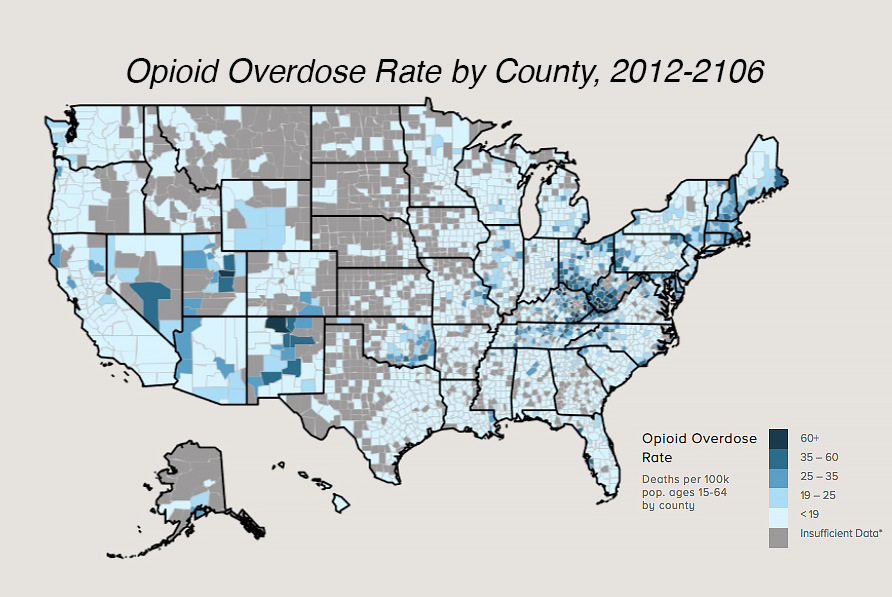The first time I heard the phrase “thousand-year flood,” I was in Nashville, Tennessee. It was May 2010, and large swaths of the downtown were suddenly under water, along with highways and neighborhoods that appeared far from the river’s reach.
Nashville isn’t anywhere near the coast. The floods didn’t begin with a hurricane. If you followed weather reports, you knew we were in for a wet mess, but when the hard rain started, it felt like any other thunderstorm.
Between May 1 and May 2, it rained more than 13 inches in Nashville, smashing previous records. Drainage backed up, then low-lying roads began to brim, and soon gushing water swept cars downstream. Highways became linear lakes. Homes filled with water, then mold. Downtown Nashville, on opposite banks of the Cumberland River, became a lagoon. By the end, 10,000 people were displaced from their homes, and 26 people were killed in Tennessee and Kentucky.
One night after the rain, I drove across downtown Nashville, trying to reach a friend’s house. Avoiding flooded blocks I had seen on the news, I skipped the lower streets and curved north, beneath the hill where Tennessee’s state capitol is perched. Rounding a bend, I instinctively slammed on the breaks. In the heavy, wet darkness, the street ahead rippled.
This month, in the wake of Hurricane Florence, Wilmington, North Carolina was cut off by flood waters. A week later, supplies were still being flown in. Over 400 water rescues were conducted in New Bern. And across the Carolinas, thousands of residents are faced with repairing — or relocating — their homes.
We know these are not “natural” disasters. We know the difference between catastrophe and inconvenience has everything to do with intersections of wealth, race, and place. And we know our communities risk being split between those who are increasingly vulnerable to disaster, and those who encounter these events from a distance, as one more drop in the torrent of bad news.
Our region is particularly vulnerable to fierce floods and torrential storms. So in the aftermath of Hurricane Florence, we’re rounding up our best writing on Southern floods. Individually, these stories present intimate accounts of disaster, recovery, and resilience. Taken together, they give a sense of what it means to be down South when the water runs high.
Louisiana
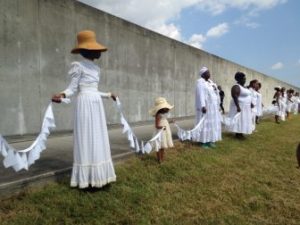 As we put the finishing touches on our first print issue, Hurricane Katrina loomed large in our thinking. The 10th anniversary of the storm was coming up, and it was a gift when Lisa O’Neill pitched us “The water will never not be here,” a haunting essay about how the flood–and the recovery–transformed her native New Orleans. Lisa writes, “I want to talk about what it means to try to repair the irreparable, about how sometimes a place is never the same and how pretending it is creates an act of incessant denial, an erasure of what was lost and what could have been.” This is an intimate meditation on New Orleans, with lessons for all of us, no matter where we seek to remember and rebuild.
As we put the finishing touches on our first print issue, Hurricane Katrina loomed large in our thinking. The 10th anniversary of the storm was coming up, and it was a gift when Lisa O’Neill pitched us “The water will never not be here,” a haunting essay about how the flood–and the recovery–transformed her native New Orleans. Lisa writes, “I want to talk about what it means to try to repair the irreparable, about how sometimes a place is never the same and how pretending it is creates an act of incessant denial, an erasure of what was lost and what could have been.” This is an intimate meditation on New Orleans, with lessons for all of us, no matter where we seek to remember and rebuild.
When the waters rise, Southerners count on their neighbors. After the 2016 Baton Rouge floods, Claire Bangser talked to locals about looking out for one another. Connie, from Baton Rouge, told this story: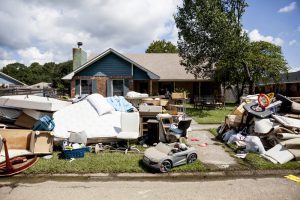
“I have a boat. I started rescuing other people. Oh my god, honey, I don’t know how many people I picked up. Old people, people in a wheelchair, couldn’t walk… My boat can fit five people only. And all the animal, cats, dogs, oy yah! I slept on the boat Saturday night. And the rain come. Oh you don’t know honey. I can’t get out, I can’t get in. I didn’t leave until Sunday evening. Sunday evening somebody come rescue me!”
North Carolina
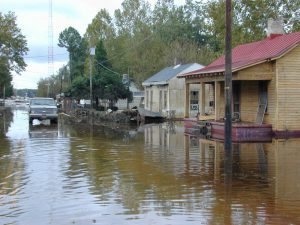 Princeville, NC, is worth fighting for.
Princeville, NC, is worth fighting for.
Originally named Freedom Hill, the town was settled by former slaves and, in 1885, it became the first United States municipality to be incorporated by free Black people. But the town is dangerously vulnerable to flooding; twice in two decades, hurricanes left the majority of the town underwater.
As Ishmael Bishop explains in a piece on the broken promises of federal flood protection, this vulnerability is not just a matter of physical geography. Rather, “Princeville epitomizes the abandonment, displacement, wanton neglect, and unimpeded mental and physical violence engendered by the state against Blacks in instances of bad weather.”
Texas
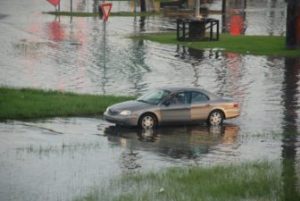 In the aftermath of Hurricane Harvey, commentators argued that sprawling growth and lack of zoning laws exacerbated flood damage in Houston, Texas. But do Houston’s own residents see things that way? In “City in a swamp,”Sammy Feldblum talks to neighbors, city officials, engineers, business leaders, activists, and university researchers to find out if Houston is serious about change.
In the aftermath of Hurricane Harvey, commentators argued that sprawling growth and lack of zoning laws exacerbated flood damage in Houston, Texas. But do Houston’s own residents see things that way? In “City in a swamp,”Sammy Feldblum talks to neighbors, city officials, engineers, business leaders, activists, and university researchers to find out if Houston is serious about change.
Virginia
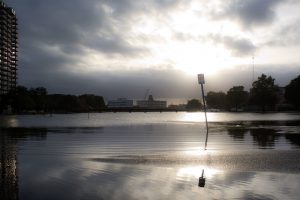 Michael Schulson’s piece, “Is Hampton Roads on the edge of the apocalypse?” is less about past floods than about whether Southerners can even imagine– let alone prepare for– the floods of the future. In an area of coastal Virginia where evangelical Christianity has an outsize impact on local politics, Schulson speaks with local pastors to see how climate change factors into their spiritual and cultural mission. Consistent with broader trends, younger evangelicals focus more on the environment than previous generations. As one source sums it up, “I care about creation, and I care about people, and I care about the poor, and I think climate change is real.” Good, because in Hampton Roads, sea levels are rising.
Michael Schulson’s piece, “Is Hampton Roads on the edge of the apocalypse?” is less about past floods than about whether Southerners can even imagine– let alone prepare for– the floods of the future. In an area of coastal Virginia where evangelical Christianity has an outsize impact on local politics, Schulson speaks with local pastors to see how climate change factors into their spiritual and cultural mission. Consistent with broader trends, younger evangelicals focus more on the environment than previous generations. As one source sums it up, “I care about creation, and I care about people, and I care about the poor, and I think climate change is real.” Good, because in Hampton Roads, sea levels are rising.
West Virginia
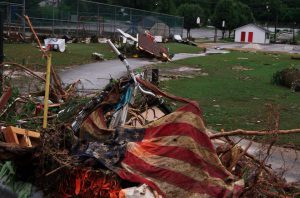 Rachel Garringer’s piece, “A love letter to West Virginia two months after the floods,” is one of the best pieces we’ve published. It’s a firsthand account of the 2016 floods, a meditation on who gets to tell disaster stories, and a celebration of Appalachian community. It’s also a reminder that Southern floods can happen anywhere, and that love for a place will always bring you back.
Rachel Garringer’s piece, “A love letter to West Virginia two months after the floods,” is one of the best pieces we’ve published. It’s a firsthand account of the 2016 floods, a meditation on who gets to tell disaster stories, and a celebration of Appalachian community. It’s also a reminder that Southern floods can happen anywhere, and that love for a place will always bring you back.
This article was originally published by Scalawag.





